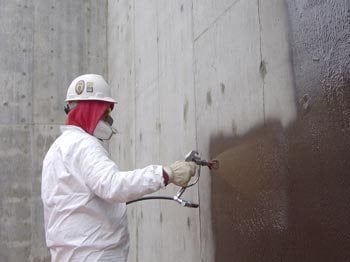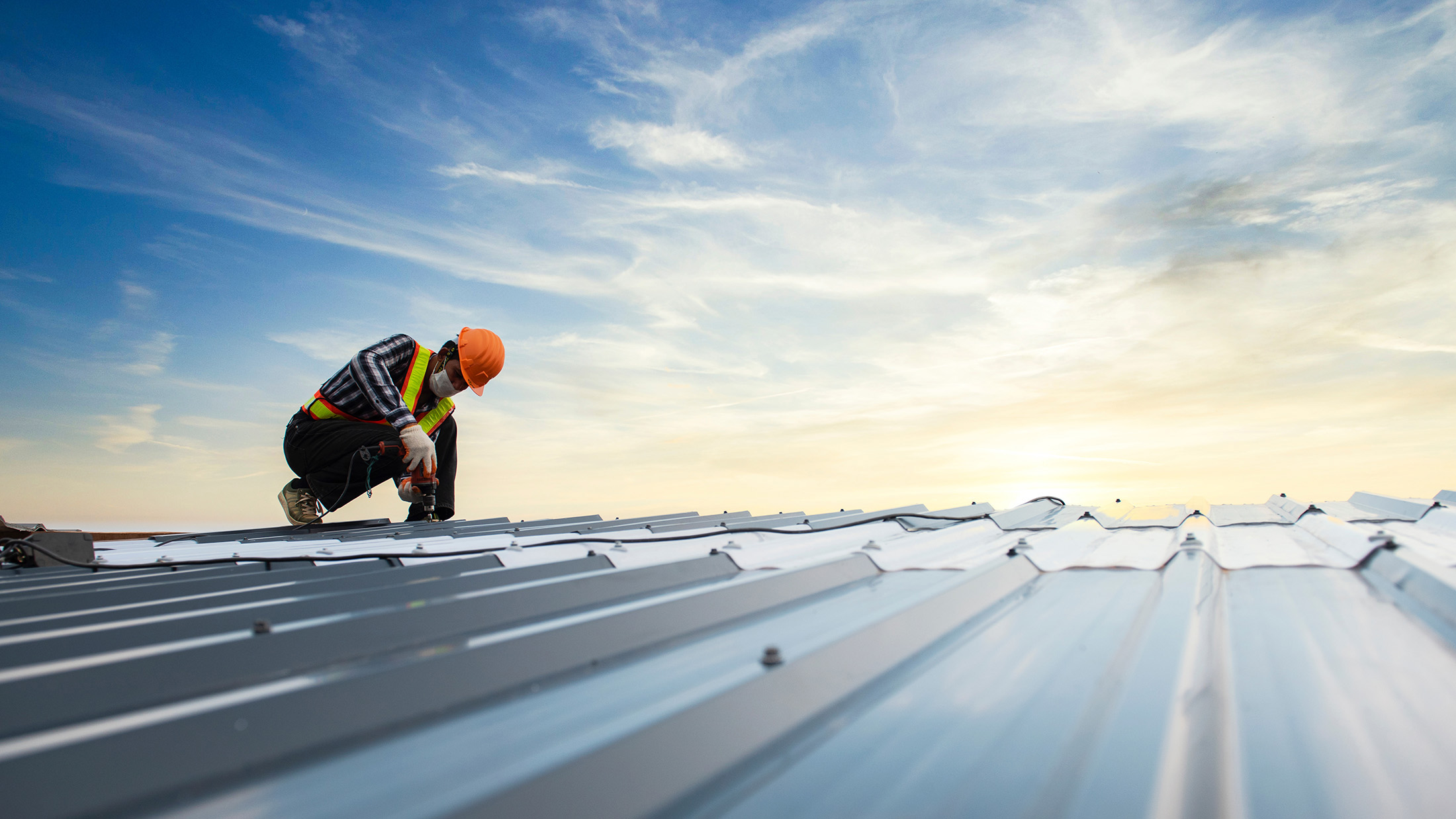Water Solutions That Withstand Omaha Weather: Year-Round Protection
Kinds of Waterproofing: Exploring the Different Techniques and Their Applications
Waterproofing is a vital facet of building and upkeep. It shields frameworks from the detrimental results of water damages. There are several methods available, each with its one-of-a-kind applications and advantages. From membrane layer systems to cementitious options, recognizing these options is important for effective execution. The choice of waterproofing method can greatly influence durability and durability. Checking out these various strategies discloses their distinctive benefits and potential obstacles, triggering further consideration of optimal options.
Membrane Layer Waterproofing Solutions
Membrane waterproofing systems function as an essential obstacle against water invasion in different frameworks. These systems typically include slim sheets made from materials like rubber, thermoplastic, or bitumen, which are related to surface areas to avoid dampness infiltration. They can be mounted over or listed below quality and are especially reliable in areas susceptible to high water exposure, such as cellars, roofs, and foundations.The setup process involves cleaning the substrate, applying adhesives or guides, and specifically suitable the membrane to ensure total insurance coverage. Membrane systems can be either totally stuck, mechanically connected, or laid loose, depending on the certain requirements of the job. They offer longevity and versatility, fitting architectural movements without endangering their waterproofing capacities. In addition, these systems can be strengthened with added layers for improved defense. Inevitably, membrane waterproofing systems are important for guarding structures against water damages and maintaining long-term stability.
Liquid-Applied Waterproofing Coatings
Liquid-applied waterproofing layers provide a flexible remedy for protecting surface areas from water seepage - Landscape drainage Omaha. These layers are composed of fluid products that, when applied, develop a smooth, flexible membrane. Their flexibility enables application on different substrates, including concrete, steel, and timber. The layers can be made use of in diverse atmospheres, from household to industrial settings, making them suitable for roofing systems, foundations, and below-grade structures.One considerable advantage of liquid-applied finishes is their capability to adapt irregular shapes and penetrate splits, producing a robust obstacle against wetness. They typically show excellent adhesion homes and resistance to UV radiation, making certain long life and longevity. In addition, the application procedure is commonly uncomplicated, enabling quick installation and minimized labor expenses. This method additionally reduces the danger of water pooling, as the continuous layer effectively routes water far from susceptible areas. On the whole, liquid-applied waterproofing layers are an effective selection for complete water security
Cementitious Waterproofing Solutions

Cementitious waterproofing options use a robust alternative for frameworks calling for reliable moisture security. These systems largely utilize a blend of cement, sand, and chemical ingredients to develop a water-proof barrier. They are commonly put on surfaces such as concrete wall surfaces, structures, and floors, offering a durable, resilient protection against water intrusion.One of the vital benefits of cementitious waterproofing is its convenience of application; it can be used utilizing a brush, roller, or concrete foundation waterproofing spray, making it appropriate for different job sizes. In addition, this method is compatible with many surface areas and can often be made use of in combination with various other waterproofing techniques.Cementitious remedies are particularly reliable in settings where water exposure is a concern, such as cellars or below-grade frameworks. Their outstanding attachment properties guarantee that they bond well with substratums, giving a strong and impermeable layer versus dampness penetration.
Bentonite Waterproofing
Bentonite waterproofing is an extremely efficient approach that uses salt bentonite clay to produce a natural obstacle against water. This strategy makes use of the distinct homes of bentonite, which expands upon contact with water, sealing any possible leaks and stopping wetness seepage. It is typically used in numerous applications, consisting of structure wall surfaces, tunnels, and retaining wall surfaces, where water resistance is essential.Bentonite can be applied in numerous forms, such as panels or coverings, providing flexibility in installation. Its capability to self-seal makes it an attractive alternative for areas based on moving dirt or fluctuating water degrees. In addition, bentonite waterproofing is ecologically friendly, as it is a natural product that my latest blog post does not present hazardous chemicals right into the environments.
Water Drainage and Exterior Waterproofing Systems
Reliable waterproofing frequently entails a mix of strategies, consisting of drainage and outside systems. Water drainage systems, such as French drains pipes and sump pumps, are created to redirect water far from structures, minimizing hydrostatic pressure versus foundations. These systems are essential in preventing water accumulation that can lead to architectural damage and mold growth.External waterproofing, on the various other hand, includes applying protective obstacles to the building's exterior. Strategies such as the installment of water resistant membranes, layers, or sealants can help protect against water seepage. This technique not only secures the structure yet also boosts the total toughness of the structure.Together, water drainage and outside waterproofing systems develop a complete remedy to handle water properly. By carrying out these techniques, homeowner can protect their financial investments versus the destructive impacts of wetness, ensuring long-lasting security and security for their buildings.
Regularly Asked Concerns
Just how Do I Pick the Right Waterproofing Approach for My Task?
Picking the right waterproofing approach relies on factors such as job kind, ecological problems, budget plan, and preferred durability. Reviewing these elements permits informed decisions tailored to specific demands and requirements.

Can Waterproofing Be Applied in Cold Weather Conditions?
Waterproofing can be applied in winter conditions, but it calls for particular materials and methods. Cold temperatures may affect healing times and adhesion, requiring mindful choice of products designed for low-temperature application.
What Are the Common Indications of Waterproofing Failure?
Usual signs of waterproofing failing include noticeable water spots, peeling off paint, wet odors, mold and mildew development, and cracks in walls or foundations. Drainage & waterproofing company Omaha. These signs recommend that moisture is penetrating the barrier, compromising its efficiency
The Length Of Time Does Waterproofing Last Prior To Requiring Maintenance?
The durability of waterproofing differs, usually lasting in between 5 to 10 years. Factors such as worldly quality, environmental conditions, and maintenance techniques influence its sturdiness, necessitating routine evaluations to assure reliable protection against water intrusion.
Exist Eco-Friendly Waterproofing Options Available?
The question next page of environment-friendly waterproofing options exposes a growing passion in sustainable materials (Landscape drainage Omaha). Numerous natural compounds, such as plant-based sealants and recycled products, supply reliable solutions while reducing ecological effect, attracting eco aware consumers